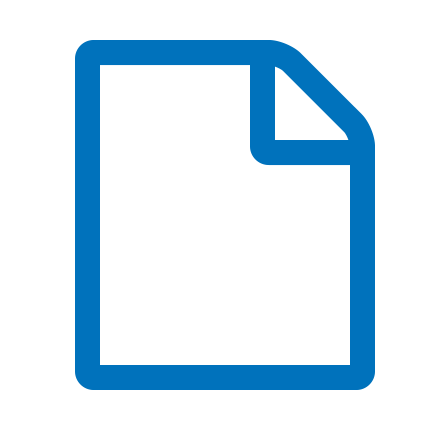Work Description
Title: Catalog for Solar Radio Bursts Observed by SunRISE Ground Radio Lab (GRL): Jan-July 2024 Open Access Deposited
| Attribute | Value |
|---|---|
| Methodology |
|
| Description |
|
| Creator | |
| Depositor |
|
| Contact information | |
| Discipline | |
| Funding agency |
|
| ORSP grant number |
|
| Keyword | |
| Date coverage |
|
| Citations to related material |
|
| Resource type | |
| Last modified |
|
| Published |
|
| Language | |
| DOI |
|
| License |
(2025). Catalog for Solar Radio Bursts Observed by SunRISE Ground Radio Lab (GRL): Jan-July 2024 [Data set], University of Michigan - Deep Blue Data. https://doi.org/10.7302/e4bh-mj50
Relationships
- This work is not a member of any user collections.
Files (Count: 2; Size: 55.5 KB)
| Thumbnailthumbnail-column | Title | Original Upload | Last Modified | File Size | Access | Actions |
|---|---|---|---|---|---|---|

|
SunRISE_Events_Catalog_Jan-Jul2024.xls | 2025-02-26 | 2025-02-26 | 52 KB | Open Access |
|

|
readme.txt | 2025-02-26 | 2025-02-26 | 3.48 KB | Open Access |
|
Date: November 2024
Dataset Title: Catalog for Solar Radio Bursts Observed by SunRISE Ground Radio Lab (GRL): Jan-July 2024
Dataset Creator: Dr. Shirsh Lata Soni
Dataset Contact: Dr Shirsh Lata Soni, Dr. Mojtaba Akhavan-Tafti, sunrisegrl@umich.edu
Funding: NASA grant #AWD006989
Research Overview: The Sun Radio Interferometer Space Experiment (SunRISE) Ground Radio Lab (GRL) is a Science, Technology, Engineering, Arts, and Mathematics (STEAM) project aiming to engage and train the next generations of scholars. To achieve this, the project 1) recruited students to participate in the design, development, and testing of a simple antenna kit that were sent to high schools nationwide free of charge, 2) prepared online, self-paced training modules to educate students on topics including radio astronomy and space weather, and 3) recruited high schools to host antenna installations, participate in regular data collection and analysis campaigns, and engage in monthly webinars and Q&A sessions with space industry experts.
Methodology:
The data collection process in the SunRISE GRL is designed to provide students with hands-on experience in operating ground-based radio telescopes, collecting solar radio burst (SRB) data, and ensuring data accuracy through multiple validation techniques. The process involves several stages, from setting up the equipment to final data analysis and cataloging.
Participants begin by installing the GRL antennas at various stations. Before starting data collection, the antennas and receivers are calibrated to ensure accuracy. Calibration accounts for local environmental factors and signal interference, including ionospheric conditions. This step ensures that the data collected will reflect true solar radio emissions rather than noise or distortion.
The raw data undergoes initial filtering to remove local interference, such as signals from terrestrial radio stations, electronics, or environmental noise. GRL also addresses the issue of ionospheric interference, a common challenge in ground-based radio astronomy where the Earth's ionosphere can distort, delay, or weaken incoming radio signals, especially at low frequencies. This interference can lead to inaccuracies in detecting SRBs and other celestial events. To counteract these effects and ensure reliable data collection, the GRL implements a variety of strategies. These include the use of multi-frequency observations to differentiate true solar signals from ionospheric distortions, and leveraging dual-station comparisons across different geographic locations to identify and filter out localized ionospheric effects.
Observed solar radio bursts are described in the following tabs in the catalog:
1. Date of Event (MM/DD/YY)
2. Start time (UTC)
3. End time (UTC)
4. Burst class:
* Describes the type of solar radio burst
5. X-Ray Flares:
* Start time (UTC)
* Peak time (UTC)
* End time (UTC)
* Class (describes flare’s strength)
6. CME (Coronal Mass Ejection):
* Date
* Velocity (km/sec)
7. Location:
* Describes which GRL station(s) the event was recorded at
Acknowledgement: The SunRISE GRL Events Correlation Catalog co-created by Lillian Cui and Mar Costacamps contains detailed information describing all of the solar radio bursts recorded by SunRISE GRL’s different stations across North America with different NASA sources.
To Cite Data:
Soni, S.L., Akhavan-Tafti, M., Catalog for Solar Radio Bursts Observed by SunRISE Ground Radio Lab (GRL). University of Michigan - Deep Blue. https://doi.org/10.7302/gnrq-4397